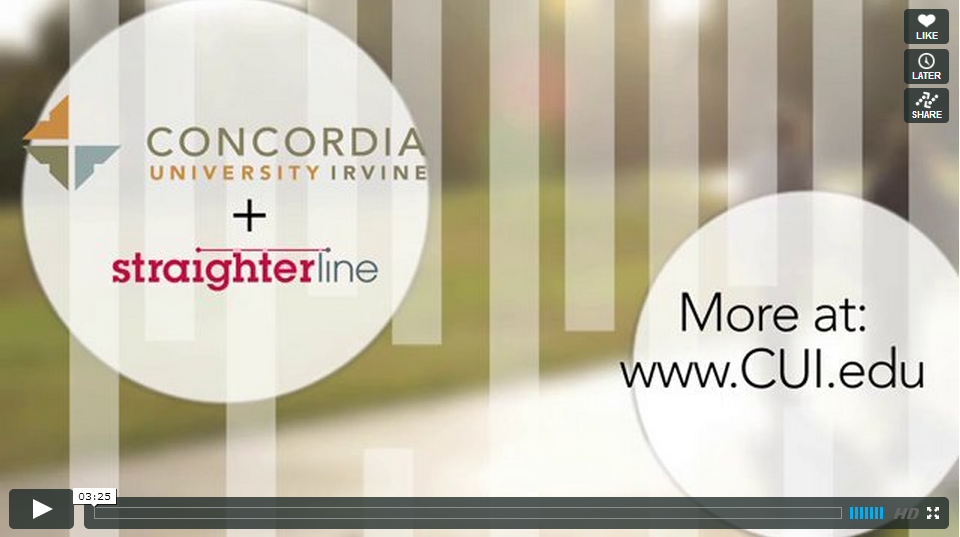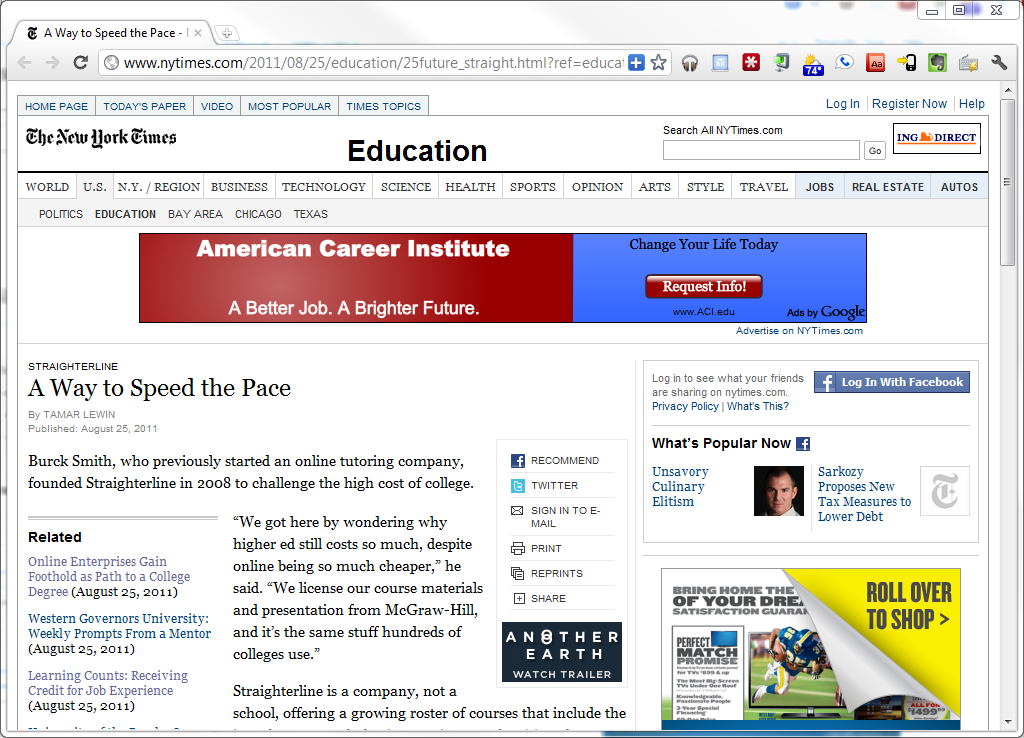Only 6 minutes but about sums up the entirety of educational and learning analytics and the considerations of an individual through institution.
Category: Education
#DALMOOC Definition of Learning Analytics
Competency 1.2: Define learning analytics and detail types of insight they can provide to educators and learners.
If you’ve been tuned in but I’ve been absent, my apologies for the series of posts coming up which all pertain to the edx.org Data, Analytics, and Learning MOOC which is being run out of UTx October through December. The text below is my personal definition of learning analytics and what they can provide educators and learners.
—
Student created data captured within a learning management system or one a site is valuable insight and information that can be leveraged to improve student success through both automated and human-initiated outreach to student. In aggregate it represents the digital experience of a student on a site, detailing their progress through designed learning experience and can be directly connected to success (or lack thereof) on examinations and assessments (especially objective assessments). In my definition I’m leaning more towards (and interested more in) the use of this data for institutional change by improving the experience at the student level. Rather than focusing only on the student level.
While the definition identifies the term as a noun, it can be acted upon by both educators and learners to improve the status of the current or potential learner through course improvements, proactive messaging, automated reminders, scaffolded materials, improved experience and course design,… Through the data I can learn how different student segments are achieving. The profile of a student modeling exactly the behavior I want, if students are using resources as intended (or not), impact of new or different resources, competency and success, and learner satisfaction.
The goal of using insight is to improve the student experience focusing on success, satisfaction, efficiency, and effectiveness.
We’ve come a long way baby…
Why I want to be a VIP BbWorld blogger: @Blackboard wants me to cover #BbW12 (they just don’t know it yet)
I started blogging about Moodle back in 2009 and have continued at Moodlenews.com which is now getting somewhere around 50,000 views a month. I know all there is about Moodle. In addition, I’ve also been using Blackboard Learn since early 2010 in my daily work at StraighterLine and we use the latest and greatest that Bb Learn has to offer. PS, not only do I know what Ocho is, but we’ve streamlined our site with the theme and are already using the advanced reporting features.
I’m a fan of learning/education technology and always try the latest releases, new LMS launches and demo all of the platforms that I can (as often as I can). If there’s something happening in the world of LMSs, I’ve probably read the article (and in many cases I have written something about it). I’m focused on student learning and experience and do everything I can to make online learning better (for everyone).
So if you want someone who knows your platforms, knows your competition, knows your newest acquisition and has a long track record of writing and covering learning management system news: I am your man.
StraighterLine in the News
@p2pu WordPress Development Course: Assignment 1
I signed up for the P2PU WordPress Development course to challenge myself in design and getting a little handle on php, WordPress development and other stuff like theming (thought it might help with my work at Moodlenews.com and beyond). Assignment 1 was to create a blog for a potential photographer client (in short order).
So after changing a spare domain’s name servers to my Bluehost account and installing a fresh WP via cPanel I was ready to go. It took about an hour’s time, which really is a testiment to the quality of themes available freely on the web and how great WP just is out of the box.
- Change nameservers
- Install WP
- Cleanup the default info
- Create the requisite pages (contact, about, gallery, services)
- Upload some media for use in the galleries and in posts (I just used the images that come default with Windows 7, they look nice and professional so it’s a good proxy for a professional photographer’s style/quality)
- Find a good theme: I settled on AutoFocus 1.0.1 by Allan Cole which I’m really digging. It creates a really snazzy landing page for more recent posts. Something I’d be stoked to see landing on a photographer’s website. After adding a few (10) posts to fill out the landing page it was on to the next step
- Creating/installing a nice “gallery/slideshow” type app for the Gallery page wasn’t necessarily required, but many of the peers in the course seemed to be adding some nice slideshow features so I figured I should take a crack at it too. I chose the Portfolio Slideshow which didn’t require any additional installation of code and could be configured right in posts/pages. It was simple to setup, though I’m not a fan of the way it requires each image to be listed if you don’t want to display all of them (time-consuming…) “[portfolio_slideshow include=”sample19,sample18,sample17,sample16,sample15,…lastimagename”]” in face I couldn’t get that to work correctly so I just deleted the images I didn’t want in the show and voila. Mission accomplished: http://www.woople.org/gallery/
- That’s it! Check out the sample site I created at www.woople.org.
If one thing is obvious, I like really simple/spartan site design:
Quote – Michael O’Hare, A letter to my students
you have every reason (except a good one) to keep what you can for yourselves
Michael O’Hare, A letter to my students
“Superman is not real”
“One of the saddest days of my life was when my mother told me Superman did not exist,” Canada says in the film. “I read comic books and I just loved ’em …’cause even in the depths of the ghetto you just thought, ‘He’s coming, I just don’t know when, because he always shows up and he saves all the good people.’ ”
Then when he was in fourth or fifth grade, he asked, “Ma, do you think Superman is actually [real]?” She told him the truth: “ ‘Superman is not real.’ I was like: ‘He’s not? What do you mean he’s not?’ ‘No, he’s not real.’ And she thought I was crying because it’s like Santa Claus is not real. And I was crying because there was no one … coming with enough power to save us.”
From Thomas Friedman’s “Steal this Movie, too” from the NYTimes (quoting Geoffrey Canada, founder of the Harlem Children’s Zone)
Quote – College Dropout Factories
As a result, without much thought, we’ve applied a binary mindset to education: elementary and secondary students are children; if they fail, it’s the fault of the schools. College students are adults; if they fail, it’s the fault of the students.
Ben Miller and Phuong Ly from the Washington Monthly article “College Dropout Factories”
Quote – The Red Herring Crusade against For-Profit Colleges
our aim is not to defend the questionable practices of for-profit colleges, but rather to draw attention to the fact that colleges of every stripe are soaking up tons of societal resources and saddling students with excessive debt loads in the face of dubious job prospects.
“The Red Herring Crusade Against For-Profit Colleges” by Daniel L. Bennett and Zac Bissonnette @ Forbes.com


